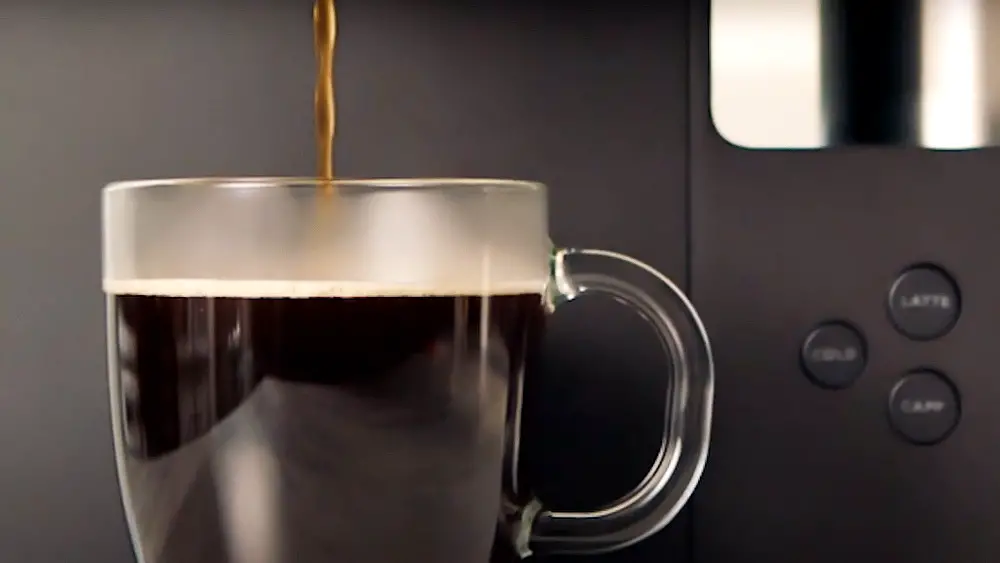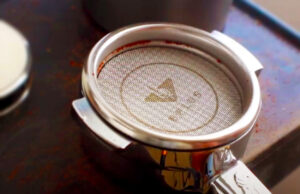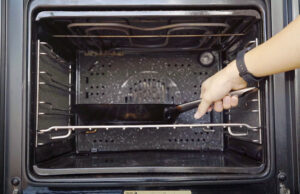Some of our posts contain affiliate links. If you buy through our links, I may earn a small commission at no extra cost to you.
Keurig Not Brewing Full Cup: Troubleshooting and Quick Solutions
Many of us look forward to the smell of a freshly made cup of coffee every day, and Keurig coffee makers have become a sign of ease and quality. But it can be disappointing when a Keurig doesn’t make a full cup of coffee. Whether you get less coffee than you thought or the coffee isn’t strong enough, this problem can mess up your morning routine. This problem can be caused by stuck needles, wrong water temperature, K-Cups that don’t work with the machine, or mineral buildup. In this help, we explain how to fix a Keurig that doesn’t make a full cup of coffee. By going into detail about each possible cause and showing you advanced methods, we hope to give you the tools you need to figure out what’s wrong and fix it, so that your Keurig always makes the satisfying cup of coffee you’ve come to expect from it.
How to Fix Your Keurig Coffee Machine That Doesn’t Make a Full Cup
Many of us look forward to starting the day with a fresh, hot cup of coffee from our Keurig coffee makers. Together, the smell, the warmth, and the taste make for a wonderful experience. But there are times when your Keurig might not make a full cup of coffee like you expect. This repair guide is full of detailed steps to help you figure out what’s wrong and fix it so that your Keurig always makes a full, satisfying cup of coffee every time you use it.

Check the Water Tank
Checking the water tank is the first thing to do if your Keurig isn’t making a full cup of coffee. This important part holds the water that is needed to make your coffee. Make sure that the water tank is sitting in the right place. Sometimes, if the tank is just a little bit out of place, it can stop the water from flowing, leaving the brewing cycle unfinished. Lift the tank up gently and put it back down firmly, making sure there are no gaps between the holes. Also, make sure that the water level gauge matches the amount of water you want, since a wrong setting could also be causing the problem.
Look at the Care of Needles
The pins in your Keurig are very important because they pierce the K-Cup and let water flow through it while the coffee is being made. Over time, coffee grounds, tea leaves, or minerals in the water can build up on these needles and make them hard to use. This buildup can stop the flow of water and make it impossible to finish brewing. To fix this, first unplug your Keurig from the wall outlet. Carefully take off the drip tray and the K-cup holder to get to the needles that go in and out of the machine. Use the repair tool that came with the machine or a straightened paperclip to gently remove any dirt that might be stuck in the needles. If you take the time to do this upkeep, the water will flow through the K-Cup more smoothly, making a bigger cup of coffee.
Only Water Brews
Running a number of water-only brew rounds is a good way to clean the inside of your Keurig and get the water flow under control. You can start multiple brewing processes with just water and no K-Cups. This step does two things: it flushes out any leftover waste that may not have been removed during the needle cleaning step, and it makes sure that the water lines inside the machine are not clogged. After each brewing cycle, you should throw away the water and start over. By making sure the water flow is constant, this can greatly improve the quality of your drinks.
Check to See If Your K-cup Fits
The type of K-Cup you use can also change the taste of your coffee. It’s important to make sure that the K-Cups you choose work with the Keurig type you have. Some older models might only be able to use certain kinds of K-Cups. Find the suggested K-Cup types in your Keurig’s user manual or the manufacturer’s directions. Using K-Cups that don’t work with each other can mess up the brewing process, making it hard to get enough coffee out of the grounds and leaving you with an unfinished cup.
Check Out the Exit Needle
Like the entry needle, the exit needle in your Keurig can get clogged by leftover coffee bits or minerals. This can make it hard for the coffee to move into your cup, giving you less than a full cup. To fix this, keep going and check and clean the exit needle carefully. The process is the same as what was said about the entry needle. Use the repair tool or a paperclip to gently push any debris out of the hole of the exit needle. But be careful not to use too much force, as this could hurt the needle or the parts around it.
Check the Temperature of the Water
The temperature of the water used to brew coffee has a direct effect on how well the coffee grounds release their tastes. If the water temperature is too low, it can lead to under-extraction, which makes a cup of coffee that is weak and not very enjoyable. To fix this part of the brewing process, you might want to run a few rounds of just hot water. This will not only help control the temperature of the water inside the machine, but it will also make sure that the water lines are filled with hot water. By doing this, you can improve the boiling process and make a cup of coffee that tastes fuller and stronger.
Clean the Coffee Maker’s Scale
Mineral layers from the water you use can build up over time inside the parts of your Keurig. This buildup can make it hard to control the flow of water and the temperature, which can lead to inconsistent brewing. Regular descaling is an important part of upkeep to deal with this problem. Follow the instructions given by the maker for descaling. Usually, this means using a Keurig-approved descaling solution or a mixture of vinegar and water. Descaling helps break down and get rid of mineral buildup, allowing water flow and temperature control to work as well as they should. Doing this repair job on a regular basis can make a big difference in how long your Keurig lasts and how well it works.
Brew Size and Settings
The amount of water used in each brew run is set by the brew size settings on your Keurig. If it seems like your Keurig is making less coffee than usual, check the brew size settings. Sometimes, the machine might be set to make a smaller cup, which makes the cup look like it isn’t full. To fix this, go to the settings menu on your Keurig and change the size of the brew to what you like. After you make the change, start a brewing cycle to see if the problem is fixed and if the machine is now making a full cup.
Make a Hard Reset
If none of the other steps give you the results you want, you can try a hard reset to see if that fixes any bugs or settings that might be causing the problem. Unplug your Keurig from the power source to start. Let the machine sit for a few minutes without being plugged in. This gives it time to restart its sensors and functions. When the time is up, plug the Keurig back in and turn it on. This step can often fix small problems that might be slowing down the making process and keeping you from getting a full cup.
Talk to Customer Service
If the problem keeps happening even after you’ve tried all the fixing steps, it’s best to contact Keurig’s customer service. Their team of experts can give you more advanced fixing steps and advice that is special to your model and problem. They might also know about less common problems that could be causing the cooking to stop before it’s done. If you need help, they can walk you through the steps of getting fixes or a new unit so that you can use your Keurig again to make a good cup of coffee.
If your Keurig coffee maker doesn’t make a full cup, it can be hard to figure out what’s wrong. This guide gives you all the steps you need to find out what’s wrong and fix it.
Other Ways to Fix Your Keurig If It Doesn’t Make a Full Cup
If the basic fixing steps don’t fix the problem of your Keurig not making a full cup, you can try some more advanced methods. These methods go deeper into how the machine works and may take a bit more technical knowledge.
Change the Needle
If your Keurig’s needles are badly jammed or broken, you may need to replace them. Some types of Keurig have needles that can be taken out and changed with new ones. Contact Keurig’s customer service or look in your user manual to find out if your model’s needles can be changed. If so, order the right replacement needles and follow the guidelines from the maker to put them in. This can make a big difference in the water flow and make sure you get a full cup when you brew.
Cleaning the inside
In addition to cleaning the needles and other parts on the outside, there may be parts inside the Keurig that need to be cleaned. But this method needs a higher level of technical skill and may require taking apart parts of the machine. If you are okay with this level of disassembly, you can carefully remove parts like the water lines and the internal tank. Clean these parts well with a solution of warm water and light soap, making sure to get rid of all mineral deposits and other dirt. Once you’re sure all the parts inside are clean, put the machine back together and run cycles with just water to make sure it works.
Getting the Temperature Right
Some more modern Keurig models have choices for temperature calibration that let you change the temperature of the water used to make coffee. If you think that the temperature of the water might be why the coffee didn’t come out right, go to the machine’s settings page and look for ways to change the temperature. Raise the temperature of the water a little and run a brew cycle to see if this fixes the problem. But be careful when changing the temperature settings, because too high a temperature can cause the coffee to be over-extracted and bitter.
Checking the Sensor and Circuit
If the problem keeps happening and you know a lot about electronics, you could check the machine’s sensors and circuits for any problems. This advanced method requires opening the machine’s case, which can void the warranty and is not without risks. Check the circuit board for signs of damage, such as burned parts or links that aren’t tight. If you find problems with these parts, you might be able to fix or replace them. But you should only try this method if you know how to do it and are ready to take the risks.
Professional Services for Repair
If you’ve tried everything else and your Keurig still won’t make a full cup, you might need to hire a professional to fix it. Look online or in your area for approved Keurig repair centers. These experts are taught to find and fix problems that are too complicated for simple fixing. Even though this might cost you more, it’s a good option if you can’t fix the problem on your own.
Remember that more complicated methods have more risks and could cause problems. Before you try to fix your Keurig in a way that could cancel the warranty, you should think about how comfortable you are with these methods and how old the guarantee is. If you’re not sure how to fix a problem or don’t feel safe doing so, it’s best to contact Keurig’s customer service or a professional repair service.
Frequently Asked Questions
Why Does My Keurig Only Make a Half-cup of Weak Coffee?
There are many things that can cause weak coffee, such as plugged needles, the wrong water temperature, or not enough coffee grounds being extracted. This problem can be fixed by cleaning the needles, changing the temperature settings, and making sure the water flows properly. This will make the cup fuller and more tasty.
What Should I Do If Only Half a Cup of Coffee Comes Out of My Keurig?
If your Keurig always makes less coffee than you expect, it could be because the needles are stuck, the water tank isn’t lined up right, or there are mineral deposits in the machine. Maintain the needles well, put the carafe in the right place, and descale your Keurig to get rid of mineral buildup and make sure you get a full cup of coffee.
Why Does My Keurig Make Weird Noises and Not Work Right?
Strange noises could be signs of problems inside, like blocks or broken parts. Start by cleaning the needles, running rounds with only water, and making sure the water tank is in the right place. If the problem keeps happening, you might want to hire a professional to figure out what’s wrong and fix it.
Can I Make My Keurig Work Better by Using Water from a Bottle?
Using filtered or bottled water with a good mix of minerals can help your Keurig work better. Minerals can build up faster if there are too many of them in the tap water. Using filtered water helps keep the water flow at its best, which makes brewing more regular and gives you a bigger cup.
Why Doesn’t My Keurig Always Make a Full Cup of Coffee?
Inconsistent brewing could be caused by changes in water flow, mineral layers, or different water temperatures. Descaling your Keurig, cleaning the needles, and making sure the water tank is aligned correctly can help keep it working well.
What Effect Does Altitude Have on the Way My Keurig Makes Coffee?
When you’re at a higher level, water boils at a lower temperature, which changes how you brew. Models of Keurig that have choices for altitude adjustment can help make up for this. By changing this setting, you can make sure that the water is at the right temperature so that the coffee grounds can be extracted well and you get a full cup of coffee.
Is There a Way to Change How Much Water Flows through My Keurig So That I Get a Bigger Cup?
Even though most Keurig models don’t have direct water flow changes, you can get the best water flow by keeping the needles clean, checking for mineral buildup, and making sure the water reservoir is in the right place. This helps to finish the brewing cycle and make a good cup of coffee.
Why Does My Keurig Show a Warning Message While It’s Making Coffee?
Error signs can be caused by things like clogs, problems with the water tank, or internal problems. Check the user instructions for your Keurig to find out what the error codes mean and how to fix them. When the problem that caused the mistake is fixed, the brew cycle can be finished successfully.
Can I Clean My Keurig with Vinegar?
Yes, you can use vinegar to clean your Keurig. Mix white vinegar and water in equal parts, and then run the mixture through your Keurig. After that, make the coffee several times with just water to get rid of any leftover vinegar taste. But for the best results, it’s best to use descaling methods that Keurig has approved.
Why Might My Keurig Not Work Right Even after I’ve Tried Different Solutions?
If a problem keeps coming up, you might need help from an expert. If your Keurig keeps making unfinished cups even after you try to fix it, you might want to contact Keurig’s customer service or go to an approved service center. Expert techs can figure out what’s wrong with your Keurig and fix it so that it makes a satisfying full cup of coffee again.
Final Words
By going through the detailed fixing steps and thinking about more advanced solutions, you’ll be ready to solve this problem. From stuck needles to K-Cups that don’t work together, mineral layers to different water temperatures, this guide has shown the way to a solution. Keep in mind that your Keurig can be brought back to its full brewing potential with regular maintenance, smart changes, and, if necessary, help from an expert. As you start your daily coffee habit again, you can be sure that the perfect, enjoyable cup is once again within reach.










